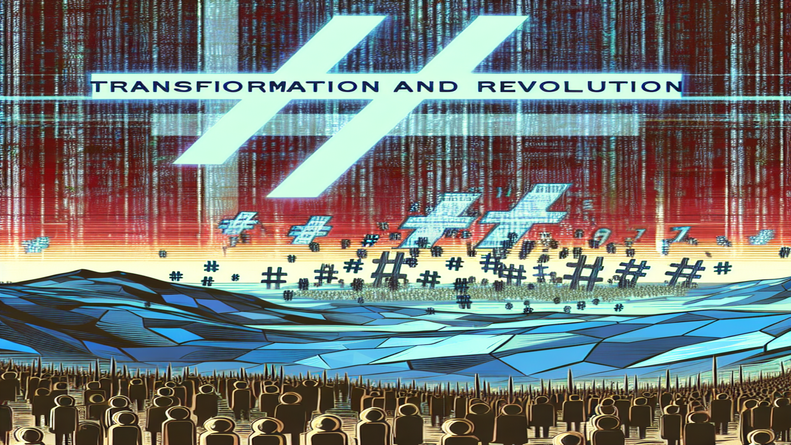![]()
Imagine living in a world where social media is much more than a mere tool; it is a consistent source of cultural exchange. The world is already witnessing such a change, with social platforms controlling the realms of communication, influencing societal norms, and offering an outlet for everything from mundane humor to profound grief, to unprecedented political movements. So, the question here is, how did these channels evolve into the de facto spaces for such diverse expressions? This blog post explores the journey of social media from simple networks to complex ecosystems thriving with human sentiments and revolutionary thoughts.
The Genesis of Communication: The Birth of Social Media
At the infancy of social media, platforms acted as basic extensions of real-world interactions—a place for reconnection and sharing snippets of daily life. No one could predict how these applications would evolve. Early on, new adopters were fascinated by the novel ability to share and communicate across the globe instantaneously. Little did they know, these platforms would soon become woven into the very fabric of society. The initial interface designs promoted user engagement, with simple features encouraging sharing, commenting, and connecting. The brightly colored ‘like’ button soon became a symbol of digital approval, subtly shaping the way users displayed their lives online.
The Pivotal Interlude: A Surge of Collective Consciousness
The growth of social media found individuals sharing not just life updates, but every fleeting thought and emotion. Memes, once inside jokes among niche communities, exploded into mainstream culture. They became the universal language for humor, cryptically conveying messages in a way that transcended language barriers, and uniting users in laughter. Concurrently, these spaces started to witness the darker spectrum of human experience, with users gravitating towards these platforms to express their grief and seek solace. Social media unexpectedly provided a communal space—a digital shoulder to lean on during times of personal and collective tragedy.
The Progressive Arc: When Joviality and Grief Coalesce
 As the distinction between online and offline lives blurred, so did the categorization of social media as purely spaces of escapism or jest. The realization dawned that one could share a meme, laugh out loud, and in the next scroll come face to face with an obituary post. The duality of content, once thought discordant, now seamlessly coexisted within feeds, representing the diverse tapestry of the human condition. Users began curating their experiences, controlling the narrative of their lives within the framework of social validation, while simultaneously witnessing the authentic life stories of others. The platforms became living diaries and memorials, as much a space for humor as they were for remembrance and mourning.
As the distinction between online and offline lives blurred, so did the categorization of social media as purely spaces of escapism or jest. The realization dawned that one could share a meme, laugh out loud, and in the next scroll come face to face with an obituary post. The duality of content, once thought discordant, now seamlessly coexisted within feeds, representing the diverse tapestry of the human condition. Users began curating their experiences, controlling the narrative of their lives within the framework of social validation, while simultaneously witnessing the authentic life stories of others. The platforms became living diaries and memorials, as much a space for humor as they were for remembrance and mourning.
The Ignition Point: Social Media as Ground Zero for Activism
Then came an era where the potential of social media as a catalyst for change became evident. It began with hashtags—simple yet powerful tools that could rally voices around causes, from civil rights to political upheaval. These digital landscapes became fertile ground for organizing activism, spawning movements that echoed through streets around the world. The Arab Spring, Occupy Wall Street, and #MeToo are prime examples of how virtual campaigns can manifest into tangible change. Social media had transcended its role as a network; it became a platform for global revolution, impacting governance and societal structures like never before.
The Dynamism: Social Media’s Unstoppable Evolution
Amidst this profound connectivity, analytics and algorithms started to shape the content that users consumed. Personalized feeds curated a world where one could spend hours without encountering a single disagreeable post. And yet, this same technology allowed for the spread of misinformation and the planning of insidious activities, sometimes with global consequences. The power of the social platform was tested as discussions moved from open forums to encrypted channels, becoming hotbeds for underground planning, including insurrections and coups. Governance and policy struggled to keep pace, grappling with maintaining the freedom of expression while curbing the potential for harm.
The Maturation: Social Media as a Diverse Forum
With maturity came responsibility, and social media companies found themselves thrust into roles they were not initially designed to fill—gatekeepers of truth, morality, and more. The platforms underwent scrutiny, forced to develop complex moderation systems to filter content, verify facts, and balance freedom with safety. The responsibility shifted to users as well. Digital literacy campaigns surged, encouraging critical consumption of information and responsible sharing practices. Social media was now an integral component of 21st-century life, demanding a new set of skills and awareness.Are you ready to explore the nuanced intersections of technology, society, and human emotion where the future of digital interaction is written? Let’s delve deeper into these transformative digital phenomenon. Connect with me on LinkedIn to discuss how you can navigate and contribute to this constantly evolving digital landscape. 🚀🌟
